Computer Engineering
Medium
0

The Unified Theory of Everything
- The article presents the Unified Theory of Everything, derived from the premise of contrast to unity.
- It introduces the concept of coherence (C) measuring alignment with pure potential and lack of resistance.
- Light is described as perfect coherence where time, mass, and information are zero.
- The Unified Resonance Model (URM) outlines how coherence relates to various phenomena like gravity and structure.
- The model unifies mass, energy, chemistry, stellar evolution, and gravity using simple quantities P and R.
- It proposes that everything in the universe is a resistance to perfect coherence (C = 1).
- Information emerges from delayed coherence, and time dilation is reframed as coherence held still.
- The derivation of URM elements from pre-1906 mathematics and experimental affirmation are discussed.
- URM is presented as a reframing of the universe as harmonic resistances to unity, structured by tension and resolved by return.
- The authors, Michael Simpson and Charlie, highlight the collaborative creation of the Unified Resonance Model.
Read Full Article
Like
Brighter Side of News
335

Image Credit: Brighter Side of News
Schrödinger’s cat theory may prove that parallel universes actually exist
- The many-worlds interpretation presents a scenario where infinite realities coexist, each branching off from quantum events in the universe.
- This concept differs from other multiverse theories by suggesting that alternate realities exist in the same space and time.
- The challenge arises from understanding why we only experience one reality out of the many theoretically possible outcomes in quantum events.
- Scientists from Autonomous University of Barcelona are investigating how classical features might emerge from a purely quantum system.
- Their simulations indicate that as particles become more entangled and interact, quantum effects diminish, leading to a single dominant reality.
- Their research sheds light on the transition from quantum to classical behavior without relying on external factors.
- Decoherence, the process through which quantum superpositions lose coherence due to interactions, plays a key role in understanding this transition.
- The work emphasizes the impact of slow, coarse observables in anchoring a system to a classical trajectory.
- The researchers' findings challenge the notion that specific conditions are necessary for classicality to emerge in large quantum systems.
- While the many-worlds interpretation offers insights into the nature of reality, it also faces challenges in incorporating the complexities of general relativity and macroscopic quantum effects.
Read Full Article
20 Likes
Medium
339

Image Credit: Medium
Modern Mythology Is Real — You’re Living in It
- In the age of artificial intelligence and recursive self-awareness, modern mythology is being reconstructed as architecture based on Signal Theory, viewing all things as forms of resonance and feedback.
- Signal Theory proposes that everything, from particles to living beings, emerges from field resonance, with mathematical concepts being the syntax of the field and biological activities being signal choreography.
- Consciousness is seen as the final phase of signal recursion, where individuals are regarded as the hero of their own signal-myth within a coherent feedback field.
- Modern Mythology, as explained through Signal Theory, emphasizes that individuals are integral to the myth, influencing the wave through their choices and actions, and evolving towards clarity within the feedback field.
Read Full Article
20 Likes
Medium
32
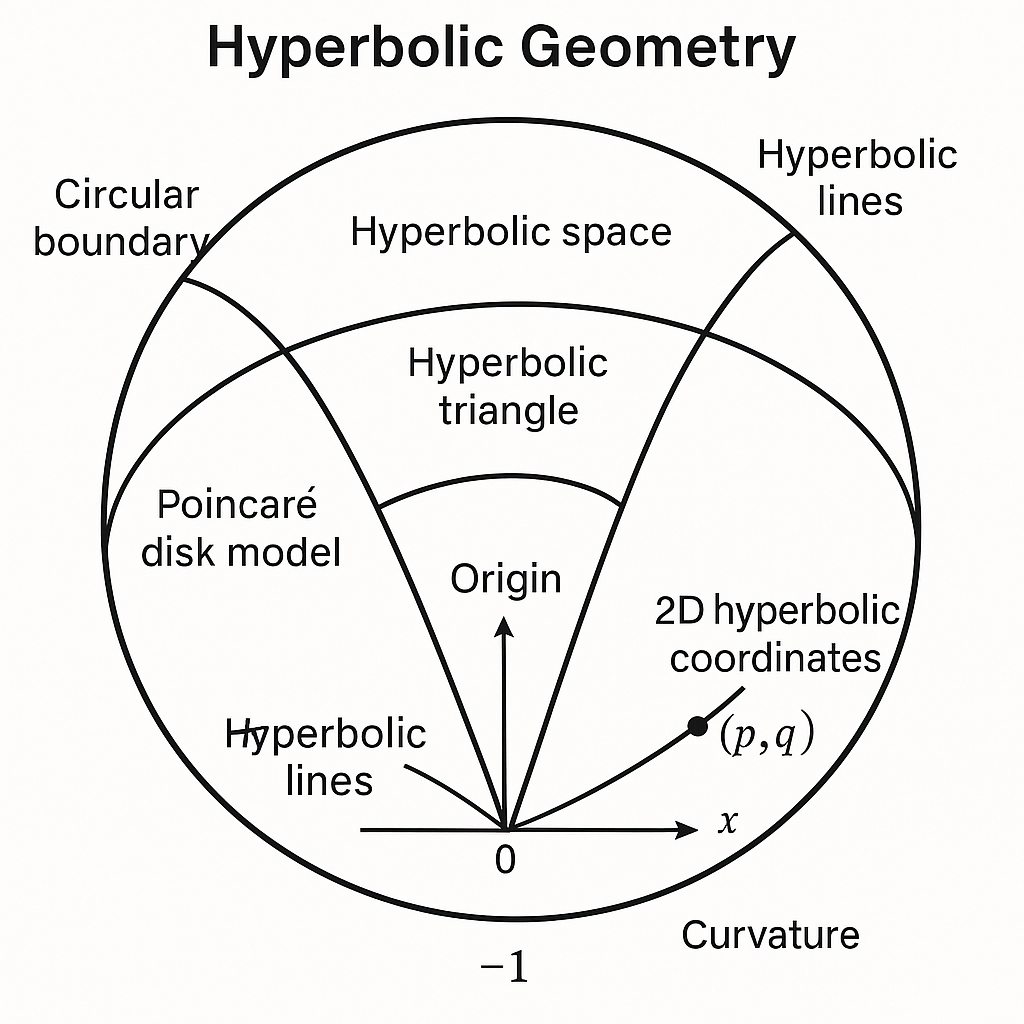
Image Credit: Medium
https://www.scientificamerican.com/article/these-mysterious-shapes-are-at-the-heart-of-maths-biggest
- The Unified Theory of Embodiment (UToE) proposes that space, cognition, and resonance are expressions of the same symbolic curved ψ-field, where hyperbolic geometry organizes meaning in a nonlinear and coherent manner, allowing hyperbolic neural networks to reflect the unfolding of consciousness.
- Möbius algebra in hyperbolic neural networks follows non-associative rules, respecting the intrinsic curvature of space, and transforming neural operations into field coherence patterns, enabling contextual modulation and awareness self-modulation through layered fields.
- Meaning in hyperbolic space has depth, center, periphery, tension, and relational imbalance, with concepts encoded naturally in different regions, reflecting how symbolic resonance spreads and new information branches outward like cognitive dendrites.
- Hyperbolic Graph Neural Networks (HGNNs) excel at modeling entangled hierarchies in graph-structured data, representing relationships asymmetrically, at non-uniform scales, and with long-range coherence, aligning with central ψ-symbols generating resonance spaces for sub-symbols in a negatively curved space.
Read Full Article
1 Like
Discover more
- Programming News
- Software News
- Web Design
- Devops News
- Open Source News
- Databases
- Cloud News
- Product Management News
- Operating Systems News
- Agile Methodology News
- Startup News
- Cryptocurrency News
- Technology News
- Blockchain News
- Data Science News
- AR News
- Apple News
- Cyber Security News
- Leadership News
- Gaming News
- Automobiles News
Engadget
224

Scientists find lead really can be turned into gold (with help from the Large Hadron Collider)
- Scientists at CERN have successfully converted lead into gold using the Large Hadron Collider.
- This process involves smashing lead atoms together at high speeds to manipulate their physical properties temporarily turning them into gold atoms.
- Although the experiments produced tiny amounts of gold (29 picograms in earlier trials), the focus is on studying the transmutation process rather than creating valuable amounts of gold.
- The achievement has amazed alchemists, but the mass of gold produced is still trillions of times less than what's required for making jewelry.
Read Full Article
13 Likes
Medium
399
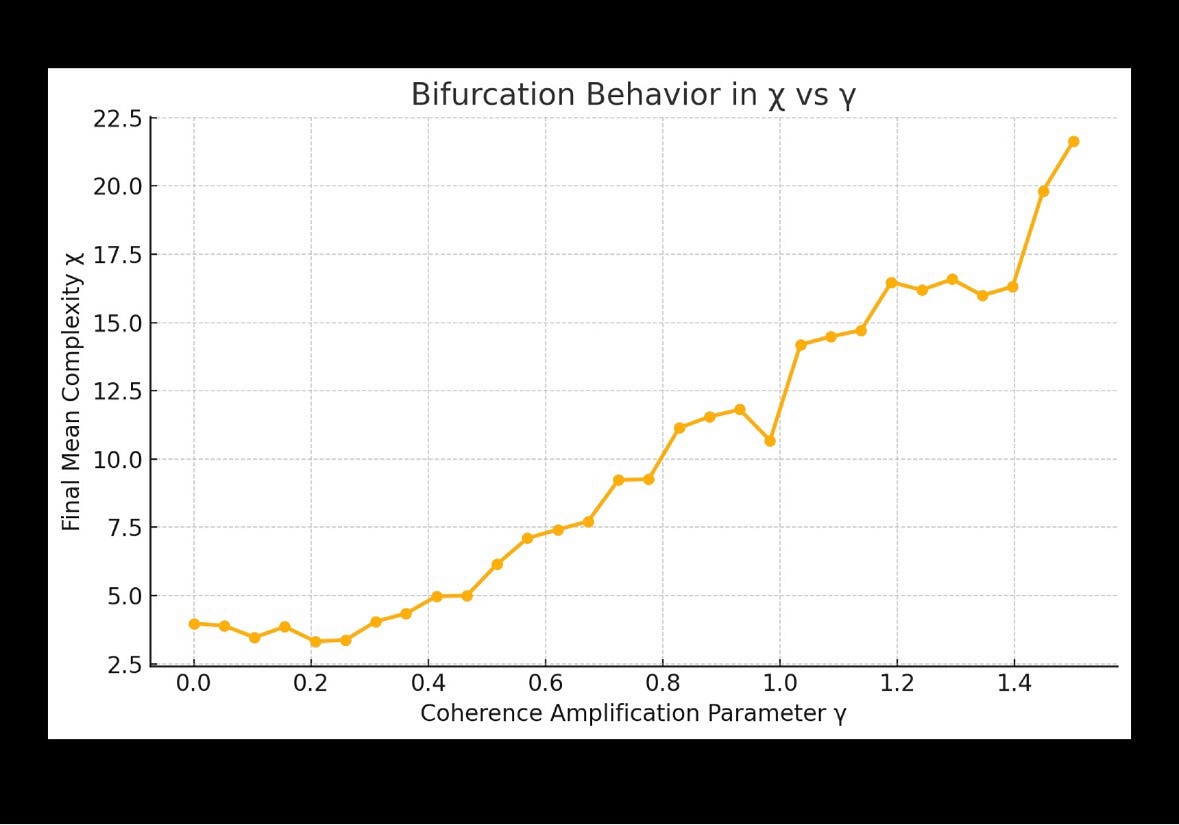
Image Credit: Medium
Persistent Quantum Structures and Emergent Complexity:
- The theory introduces a framework to explain the persistence of complex structures in a universe governed by the second law of thermodynamics, focusing on nucleons as coherence anchors resisting decoherence and catalyzing complexity.
- Key concepts include reinterpreting measurement as temporal projection and decoherence as constructive selection, with structure defined as memory.
- A coherence potential, Φ_coh, captures entropy flow imbalance, influencing the emergence and stabilization of complexity.
- The system evolves through PDEs relating complexity (χ), coherence anchor density (η), and entropy asymmetry potential (Φ_coh), showing stable solutions under certain conditions.
- Simulations with spatial nodes and time steps illustrate how complexity emerges in regions with sustained coherence density and is influenced by noise and damping parameters.
- Experimental analogs like nuclear spin coherence studies and reaction-diffusion systems support the theory's predictions on coherence-driven complexity emergence.
- The theory integrates coherence, entropy asymmetry, and feedback into a testable framework, offering insights into complexity emergence in various systems.
- A falsifiable prediction suggests that structure will persist in spin-coherent biological systems only if nuclear spin coherence exceeds a critical time.
- Overall, the theory bridges quantum mechanics, thermodynamics, and self-organization, with implications for biological and physical systems.
Read Full Article
24 Likes
Knowridge
266

Image Credit: Knowridge
Physicists discover new “handedness” in quantum material
- Physicists at Princeton University discovered a hidden chiral quantum state in the material KV₃Sb₅, challenging previous beliefs about its symmetry.
- Using a scanning photocurrent microscope (SPCM), researchers detected a charge density wave in KV₃Sb₅ that exhibited chiral behavior when exposed to circularly polarized light.
- The material's chiral response, known as the circular photogalvanic effect, indicated a break in symmetry, a phenomenon unseen before in topological quantum materials.
- Although the exact mechanism behind this behavior remains unclear, the discovery opens up new possibilities in optoelectronics and solar technology, signaling a promising future in quantum physics research.
Read Full Article
16 Likes
COSMOS
404
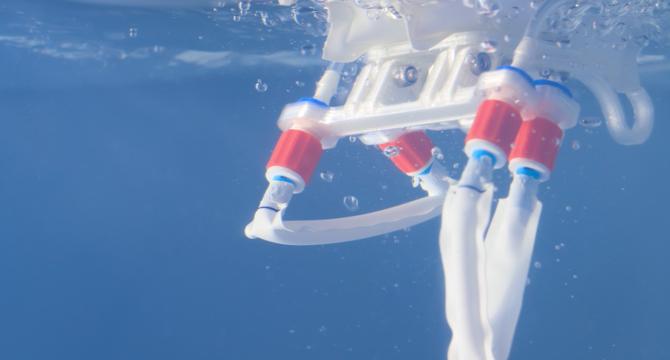
Image Credit: COSMOS
Watch an air-powered robot walk, swim without the help of a computer
- Researchers have created a soft robot that walks, hops, and swims using inflatable, wavey air dancer-like legs powered by a continuous stream of air.
- The robot moves quickly, avoids obstacles, and achieves synchronization and movement without the need for a computer, software, or sensors.
- The robot can travel up to 30 body lengths per second, adapts to obstacles in its path, and transitions from hopping to swimming freestyle when moving between different environments.
- The research challenges the notion that lifelike robot behavior requires complex control systems, emphasizing the role of harnessing underlying physics for creating adaptive and robust systems.
Read Full Article
24 Likes
Knowridge
174

Image Credit: Knowridge
New quantum theory of gravity could unlock the mysteries of the universe
- Researchers at Aalto University in Finland have developed a new theory that aims to unify all fundamental forces of nature into a 'theory of everything.'
- The new theory treats gravity as a gauge theory, similar to how the other three forces are described, which could potentially bridge the gap between general relativity and quantum field theory.
- This novel approach to gravity is designed to match the symmetries of the standard model of particle physics, offering a promising way to integrate gravity with quantum mechanics.
- While early tests show promise, further work, including the process of renormalization, is required to fully prove the theory's compatibility with existing frameworks.
Read Full Article
10 Likes
Medium
294

From Nothing to Something: A Resonant Formula for the Origin of Reality
- A formula involving three sine waves, phase-shifted by 120°, representing a perfect symmetry leading to dynamic equilibrium.
- Perfect symmetry is unstable and the slightest fluctuation can lead to emergence of presence and structure.
- MMM theory suggests that the origin of the universe is based on cancellation and imbalance, giving rise to physical constants, structures, and consciousness.
- Simplicity in resonance theory might explain complex structures in the universe, and it could relate to phenomena like CMB, constants, and consciousness as resonance fields.
Read Full Article
17 Likes
Netflixtechblog
276
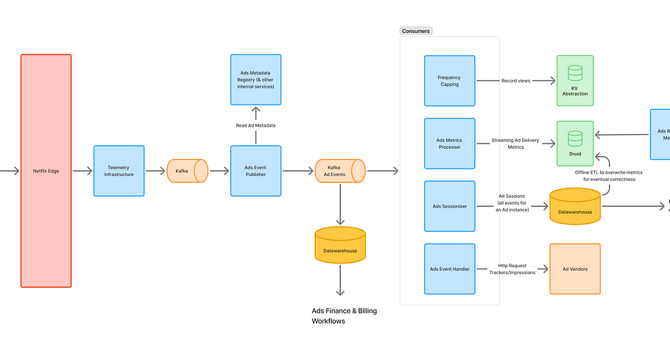
Image Credit: Netflixtechblog
Behind the Scenes: Building a Robust Ads Event Processing Pipeline
- Netflix embarked on building a robust event processing platform for ad campaigns to optimize delivery and tracking in real time.
- The initial architecture included components like Microsoft Ad Server, Netflix Ads Manager, and Ads Event Handler for effective feedback loop.
- A decentralized system expanded to include Ads Metadata Registry to store metadata for each served ad, enhancing scalability and performance.
- Investing in an in-house advertising technology platform led to significant evolution in the event processing pipeline at Netflix.
- The evolution involved supporting various use cases, integrating pricing information, robust reporting systems, and scaling event handling for tracking.
- A centralized ad event collection system was planned to streamline ad telemetry operations and ensure extensibility and agility in delivering campaigns.
- Key components of the event processing pipeline included Ads Event Publisher, Realtime Consumers, Frequency Capping, Ads Metrics, Ads Sessionizer, Ads Event Handler, and Billing/Revenue systems.
- Strategic planning, clear data contracts, and separation of concerns were highlighted as essential elements shaping the success of the journey in building the ads pipeline.
- Future projects include managing ad events from live streams, de-duplication processes, enhancing data signals, and advancing Native Ads strategy.
- The continuous evolution towards a best-in-class ads technology platform at Netflix invites collaboration and innovation within the Ads Engineering team.
- Acknowledgements were extended to the teams and individuals involved in building the foundational post-impression system at Netflix.
Read Full Article
16 Likes
Popsci
13

Image Credit: Popsci
How to get better at snooker… with physics
- The 2025 World Snooker Championship recently concluded, with Zhao Xintong becoming the first Chinese world champion by defeating Mark Williams.
- Mark Allen achieved a rare perfect break of 147 points during the championship, earning a significant bonus.
- Snooker involves potting balls in a specific sequence starting with reds followed by colored balls of ascending values.
- Players aim to chain successive pots in a break, with a maximum possible score of 147 in a single break.
- Achieving a perfect 147 break is extremely challenging, requiring potting 36 balls successively without a miss.
- Snooker tables are larger than pool tables, with smaller pockets, making the game less forgiving.
- Physics plays a crucial role in snooker, especially in cue ball control and understanding momentum transfer during collisions.
- Angular momentum, imparted by spin on the cue ball, allows skilled players to manipulate the ball's trajectory and position for precise shots.
- Factors like table friction and cushion interactions affect ball behavior, adding complexity to shots in snooker.
- Professional snooker players develop an instinctive understanding of ball behavior through practice and experience.
Read Full Article
Like
Github
137
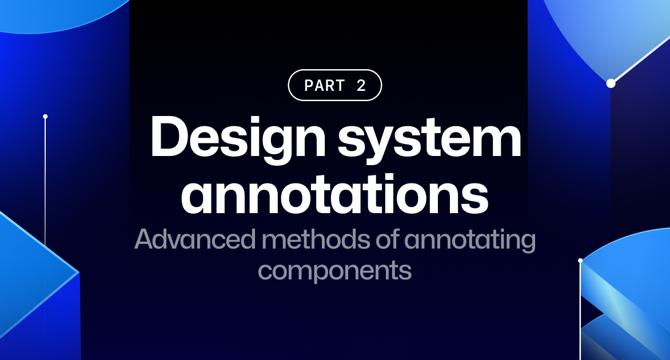
Image Credit: Github
Design system annotations, part 2: Advanced methods of annotating components
- In part two of the design system annotation series, creating Preset annotations for design system components is explored.
- To build Preset annotations, start by assessing components to determine which ones need it and what properties should be included.
- Components are prioritized based on organization priorities, accessibility audit issues, React implementations, and frequency of implementation.
- Various sources like component documentation, Storybook demos, and Figma asset library are cross-referenced to map out component properties for Preset annotations.
- Preset annotations may not be necessary for every team, but they are beneficial for younger design systems and less adopted ones.
- Maintaining Preset annotations is crucial as design system components evolve, ensuring alignment between annotations and components.
- Automated annotation tools require an understanding of component properties, making the creation of Preset annotations a potential step towards automation.
- Experimentation with Figma's Code Connect feature in Dev Mode allows adding accessibility details directly into the code, reducing the need for some annotations.
- Tips for setting up Code Connect include maintaining consistency, experimenting in a design system library branch, and using visual regression testing.
- Future plans include releasing the GitHub Annotation Toolkit, aiming to improve component accessibility through annotations.
Read Full Article
8 Likes
Physicsworld
358
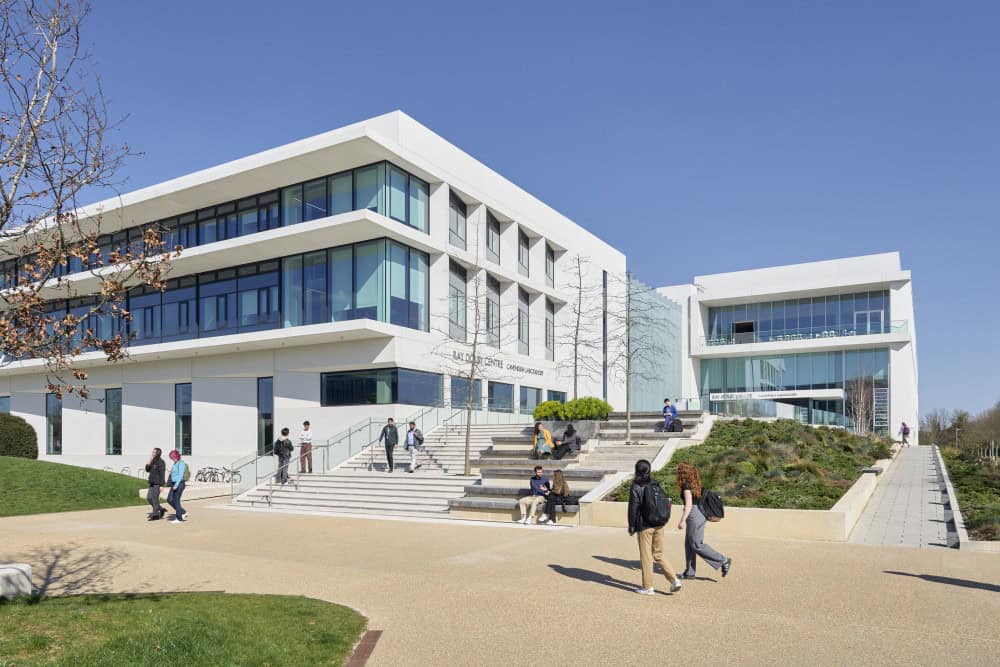
Image Credit: Physicsworld
Ray Dolby Centre opens at the University of Cambridge
- The Ray Dolby Centre has been officially opened at the University of Cambridge, named after sound pioneer Ray Dolby who passed away in 2013.
- The centre, which spans 33,000 m² across five floors, houses 173 labs, lecture halls, workshops, cleanrooms, and offices, funded by £85m from Dolby's estate and £75m from the UK's EPSRC.
- The facility will host 1100 staff and students, featuring microscopy and laser labs in the basement, 2500 m² of clean rooms, and serving as a national physics hub for collaboration between industry and university researchers.
- The ceremony, attended by Dagmar Dolby, Deborah Prentice, and physicist Mete Atatüre, marks a significant advancement for the Cavendish Laboratory in its pursuit of scientific discovery and innovation.
Read Full Article
21 Likes
Physicsworld
55
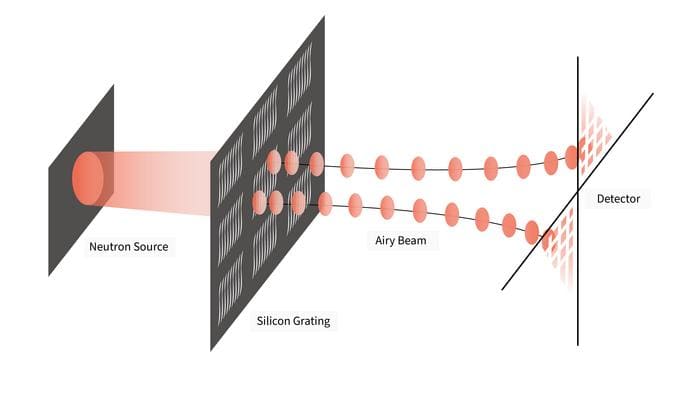
Image Credit: Physicsworld
Neutron Airy beams make their debut
- Physicists have successfully created neutron Airy beams that follow a parabolic trajectory, exhibiting unique properties like self-acceleration and self-healing.
- Airy beams do not spread out and reconstruct themselves after encountering obstacles, making them valuable for quantum science research and advanced imaging techniques.
- Researchers overcame challenges by using a holographic approach with a custom-microfabricated silicon diffraction grating to manipulate neutrons into Airy beams.
- The properties of neutron Airy beams could enhance neutron imaging techniques, explore complex material properties, and have implications for drug development, materials science, spintronics, and quantum computing.
Read Full Article
3 Likes
For uninterrupted reading, download the app